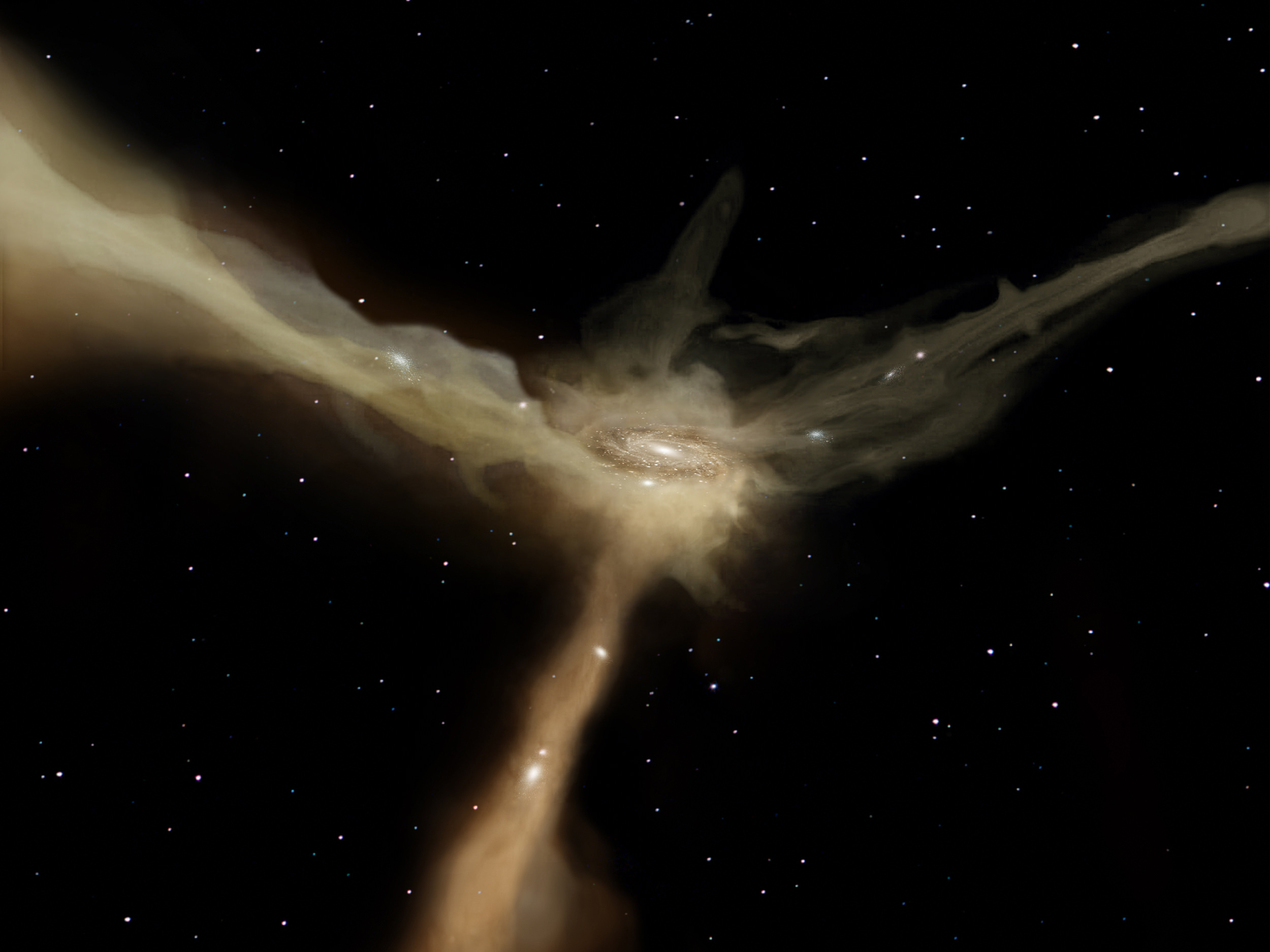Space largely seems quite empty! Yet even in the dark voids of the cosmos, ultra-high-energy cosmic rays are streaming through space. The rays contain 10 million times as much energy as the Large Hadron Collider can produce! The origin of the rays though is still the source of many a scientific debate but they are thought to be coming from some of the most energetic events in the universe. A new paper suggests the rays may be linked to magnetic turbulence, coming from regions where magnetic fields get tangled and twisted up.
Continue reading “Another Clue About the Ultra-High Energy Cosmic Rays: Magnetic Turbulence”Has the Universe Been Designed to Support Life? Now We Have a Way to Test it!

The anthropic principle states that the fundamental parameters of the Universe such as the strength of the fundamental forces, have been finely tuned to support life. Whether this is true or not or whether it is even worthy of scientific investigation has been hotly debated. A new paper proposes some ways that this may now be tested and perhaps brings the topic under scientific scrutiny for the first time.
Continue reading “Has the Universe Been Designed to Support Life? Now We Have a Way to Test it!”Webb Sees a Supercluster of Galaxies Coming Together

As a species, we’ve come to the awareness that we’re a minuscule part of a vast Universe defined by galaxy superclusters and the large-scale structure of the Universe. Driven by a healthy intellectual curiosity, we’re examining our surroundings and facing the question posed by Nature: how did everything get this way?
We only have incremental answers to that huge, almost infinitely-faceted question. And the incremental answers are unearthed by our better instruments, including space telescopes, which get better and more capable as time passes.
Enter the James Webb Space Telescope.
Continue reading “Webb Sees a Supercluster of Galaxies Coming Together”Observations by DESI Open the Door to Modified Gravity Models

The standard theory of cosmology is based upon four things: the structure of space and time, matter, dark matter, and dark energy. Of these, dark energy is the one we currently understand the least. Within the standard model, dark energy is part of the structure of space and time as described by general relativity. It is uniform throughout the cosmos and expressed as a parameter known as the cosmological constant. But initial observations from the Dark Energy Spectroscopic Instrument (DESI) suggest the rate of comic expansion may vary over time. If further observations reinforce this, it could open up cosmological models to alternatives to general relativity known as modified gravity.
Continue reading “Observations by DESI Open the Door to Modified Gravity Models”Cosmology is at a Crossroads, But New Instruments are Coming to Help

Our understanding of the Universe is profound. Only a century ago, astronomers held a Great Debate to argue over whether our galaxy was an island universe, or whether nebulae such as Andromeda were galaxies in a much larger cosmos. Now we know that the Universe is billions of years old, ever expanding to billions of light-years across, and filled with not just stars and galaxies but with dark energy and cold dark matter. Astronomers summarize this understanding as the LCDM model, which is the standard model of cosmology. While the observational data we have strongly supports this model, it is not without its challenges.
Continue reading “Cosmology is at a Crossroads, But New Instruments are Coming to Help”Could Primordial Black Holes Be Hiding in Plain Sight?
Are Primordial Black Holes real? They could’ve formed in the unusual physics that dominated the Universe shortly after the Big Bang. The idea dates back to the 1960s, but so far, the lack of evidence makes them purely hypothetical.
If they do exist, a new paper suggests they may be hiding in places so unlikely that nobody ever thought to look there.
Continue reading “Could Primordial Black Holes Be Hiding in Plain Sight?”A Superfast Supercomputer Creates the Biggest Simulation of the Universe Yet

Scientists at the Department of Energy’s Argonne National Laboratory have created the largest astrophysical simulation of the Universe ever. They used what was until recently the world’s most powerful supercomputer to simulate the Universe at an unprecedented scale. The simulation’s size corresponds to the largest surveys conducted by powerful telescopes and observatories.
Continue reading “A Superfast Supercomputer Creates the Biggest Simulation of the Universe Yet”Einstein Predicted How Gravity Should Work at the Largest Scales. And He Was Right

When Albert Einstein introduced his theory of general relativity in 1915, it changed the way we viewed the Universe. His gravitational model showed how Newtonian gravity, which had dominated astronomy and physics for more than three centuries, was merely an approximation of a more subtle and elegant model. Einstein showed us that gravity is not a mere force but is rather the foundation of cosmic structure. Gravity, Einstein said, defined the structure of space and time itself.
Continue reading “Einstein Predicted How Gravity Should Work at the Largest Scales. And He Was Right”Here’s How to Weigh Gigantic Filaments of Dark Matter

How do you weigh one of the largest objects in the entire universe? Very carefully, according to new research.
Continue reading “Here’s How to Weigh Gigantic Filaments of Dark Matter”James Webb Confirms Hubble’s Calculation of Hubble’s Constant
We have been spoiled over recent years with first the Hubble Space Telescope (HST) and then the James Webb Space Telescope (JWST.) Both have opened our eyes on the Universe and made amazing discoveries. One subject that has received attention from both is the derivation of the Hubble Constant – a constant relating the velocity of remote galaxies and their distances. A recent paper announces that JWST has just validated the results of previous studies by the Hubble Space Telescope to accurately measure its value.
Continue reading “James Webb Confirms Hubble’s Calculation of Hubble’s Constant”


